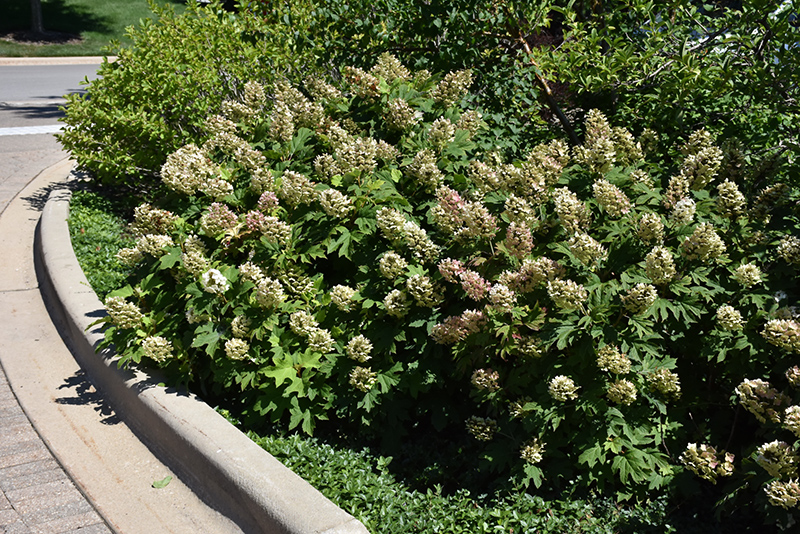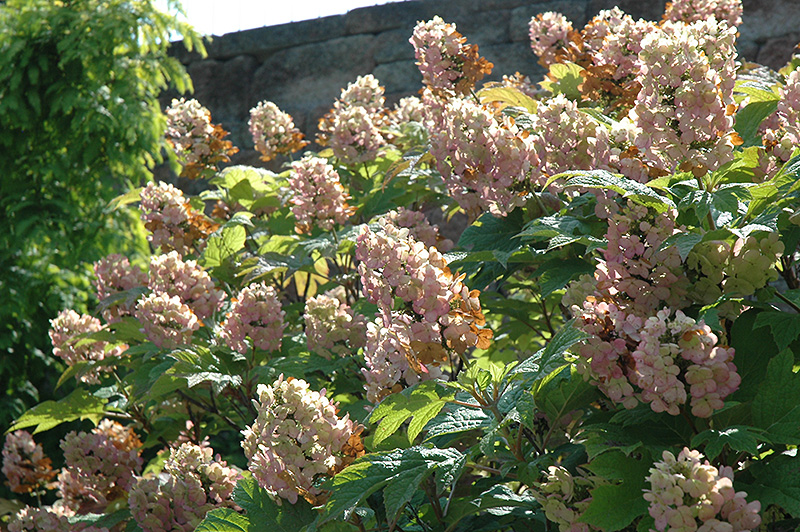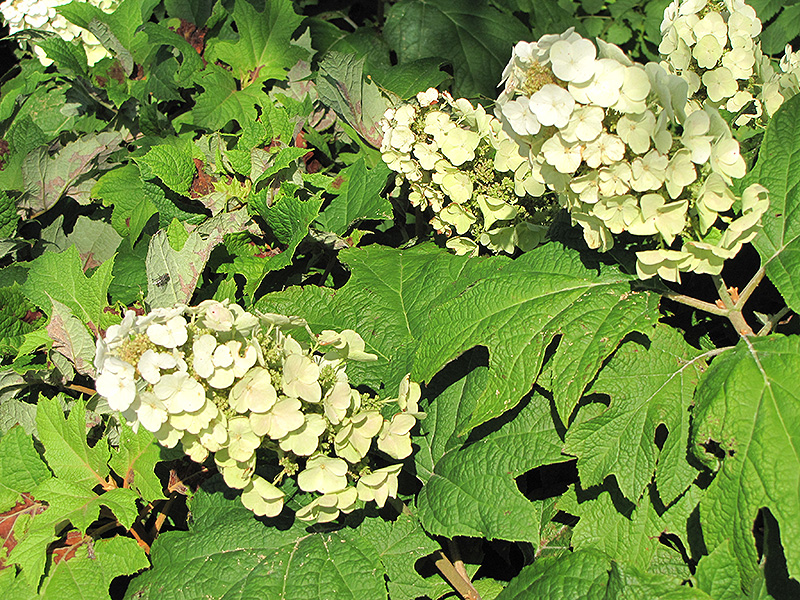
PLANT FINDER
Snow Queen Hydrangea Hydrangea quercifolia 'Snow Queen' Height: 6 feet Spread: 5 feet
Sunlight:
Hardiness Zone: 5 Other Names: Oak Leaf Hydrangea Description: A phenomenally attractive shrub featuring showy upright flower spikes which fade from white to pink, interesting foliage with reliable fall color and papery bark; rather coarse in appearance, best used in groupings in a garden composition "Riverbend Nurseries' Tried & True" When you see the "Riverbend Nurseries' Tried & True" label, you can rest assured that our experts have determined that this plant is especially well-adapted to thrive in Middle Tennessee! Many (but not all) "Tried & True" plants are native to our area. Ask us for tips on how to plant, water, & care for your new plant! Ornamental Features Snow Queen Hydrangea features bold fragrant conical white flowers with pink overtones at the ends of the branches from early to mid summer. The flowers are excellent for cutting. It has dark green deciduous foliage which emerges grayish green in spring. The large fuzzy lobed leaves turn an outstanding brick red in the fall. The peeling brick red bark adds an interesting dimension to the landscape. Landscape Attributes Snow Queen Hydrangea is a multi-stemmed deciduous shrub with an upright spreading habit of growth. Its strikingly bold and coarse texture can be very effective in a balanced landscape composition. This is a relatively low maintenance shrub, and is best pruned in late winter once the threat of extreme cold has passed. It has no significant negative characteristics. Snow Queen Hydrangea is recommended for the following landscape applications; Planting & Growing Snow Queen Hydrangea will grow to be about 6 feet tall at maturity, with a spread of 5 feet. It tends to be a little leggy, with a typical clearance of 1 foot from the ground, and is suitable for planting under power lines. It grows at a slow rate, and under ideal conditions can be expected to live for approximately 30 years. This shrub does best in partial shade to shade. It prefers to grow in average to moist conditions, and shouldn't be allowed to dry out. It is not particular as to soil type or pH. It is somewhat tolerant of urban pollution, and will benefit from being planted in a relatively sheltered location. Consider applying a thick mulch around the root zone in winter to protect it in exposed locations or colder microclimates. This is a selection of a native North American species. Nursery Notes In Middle Tennessee, this variety of hydrangea performs best in morning sun with good afternoon shade. This location protects it from the hottest sun of the day.![]()
![]()
![]()
![]()
![]()
![]()
![]()
![]()
![]()
![]()
![]()
![]()
![]()
![]()



